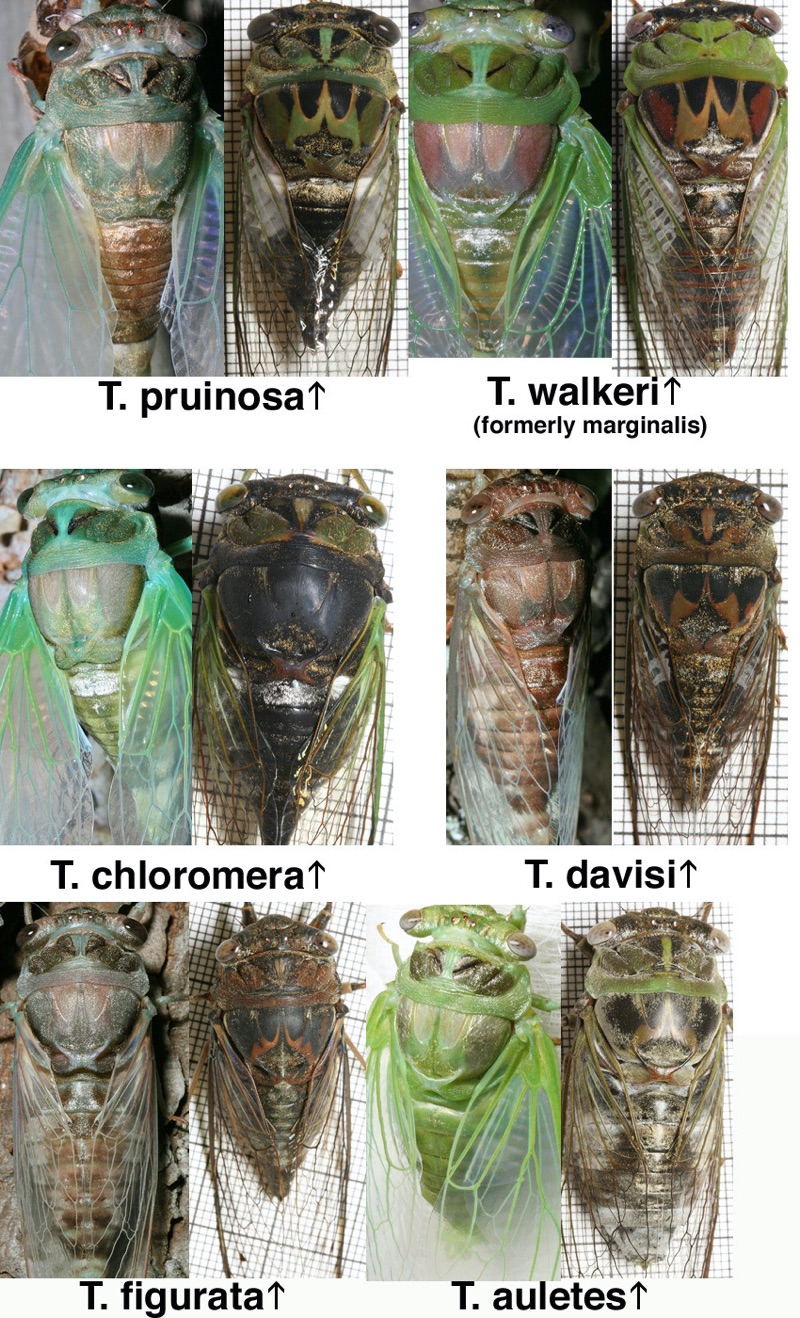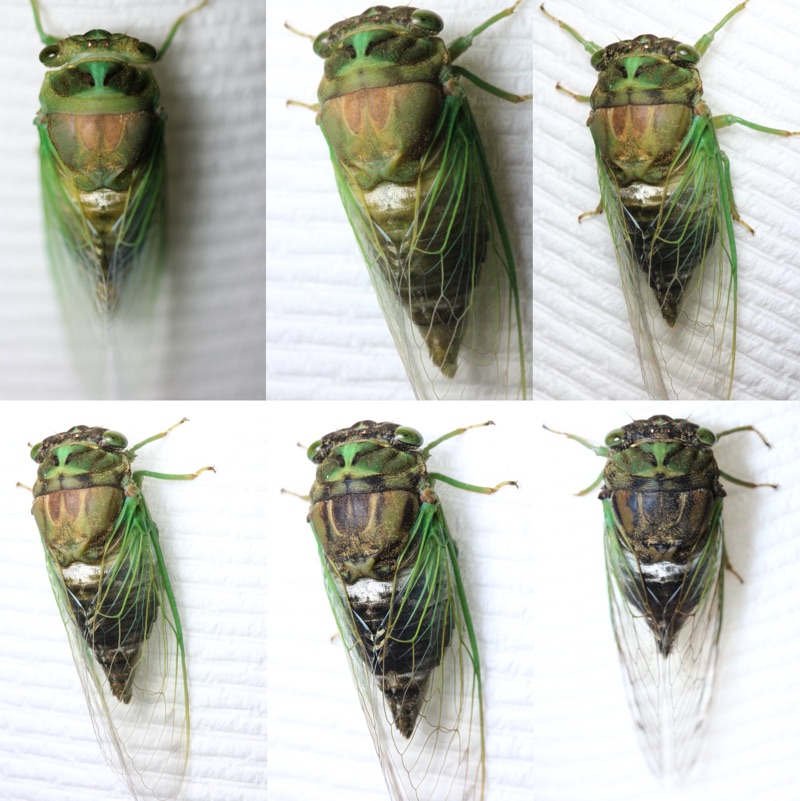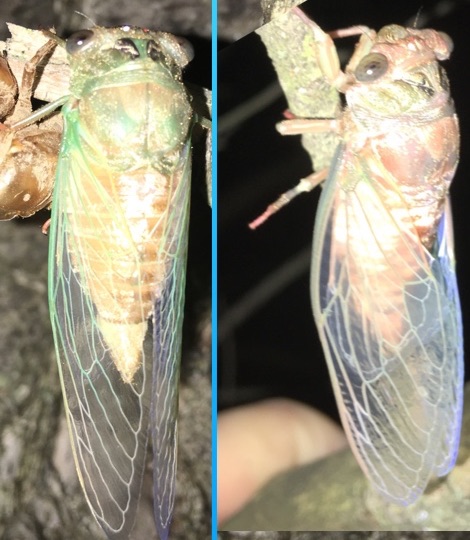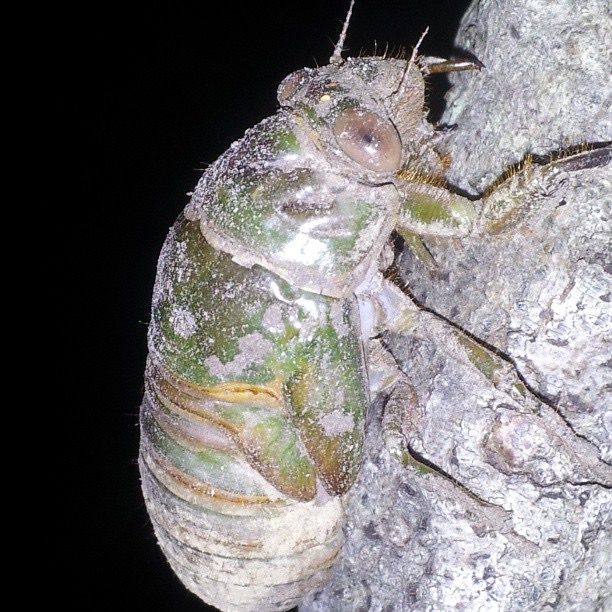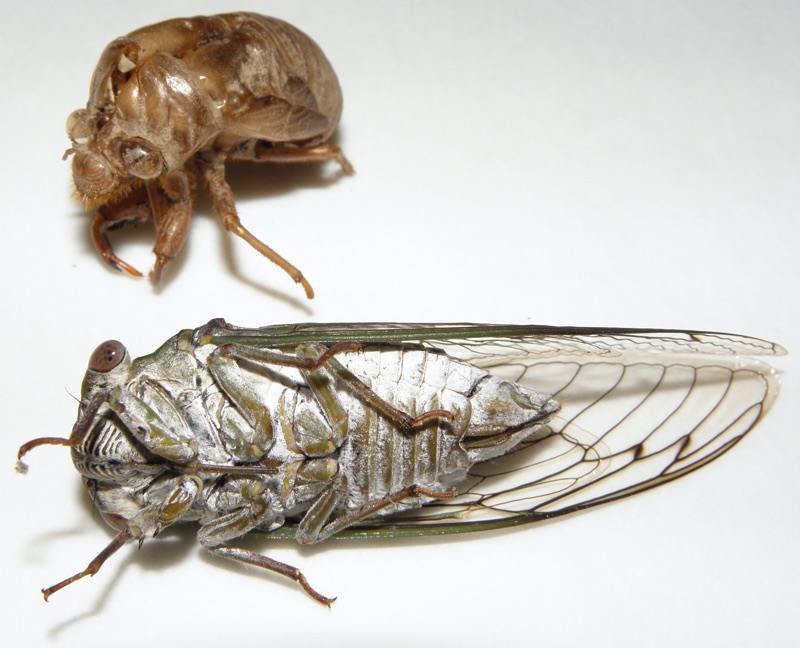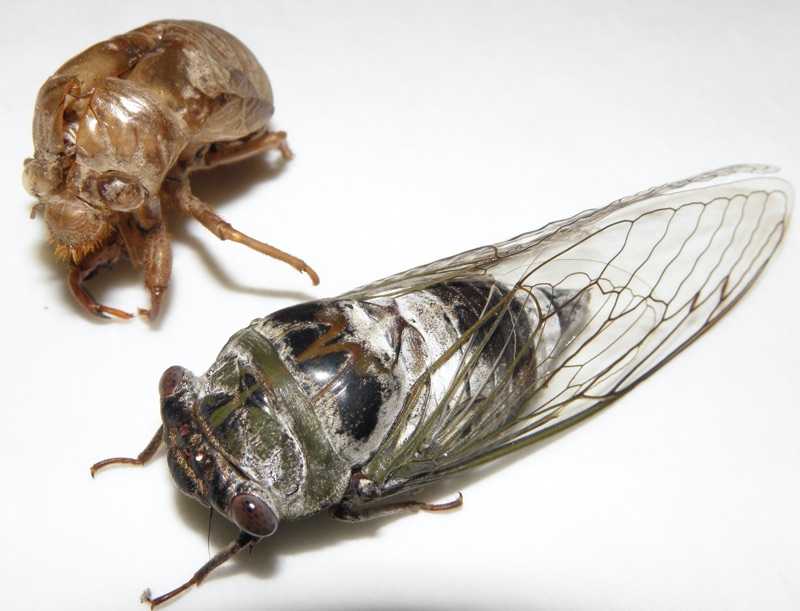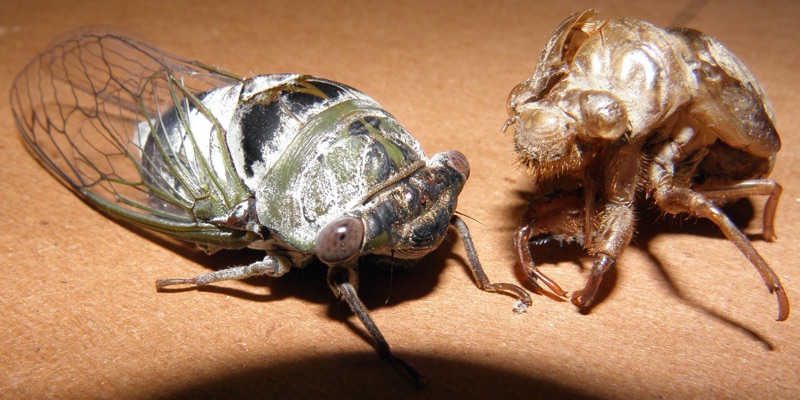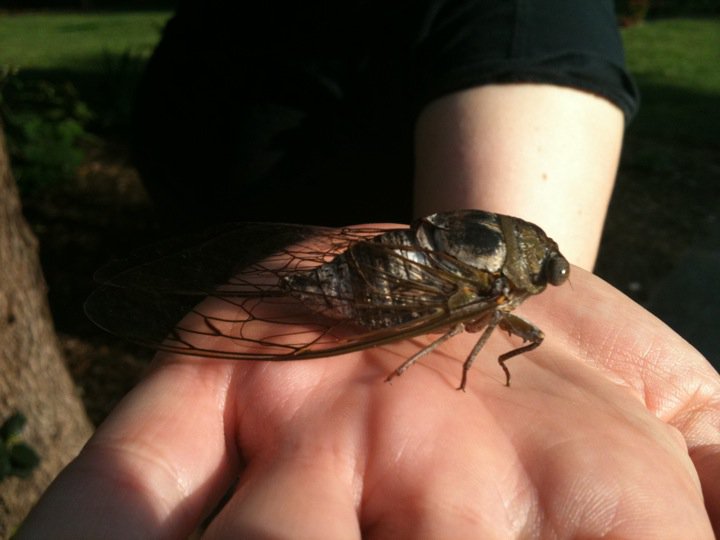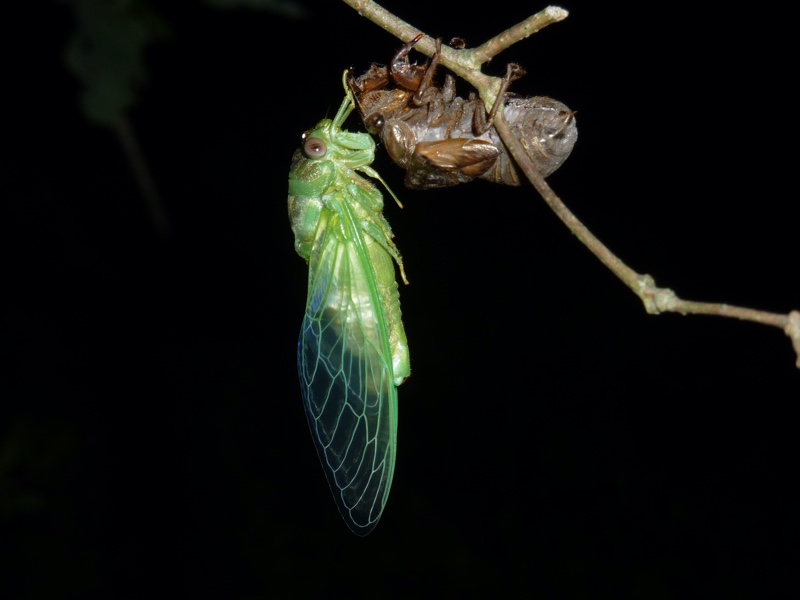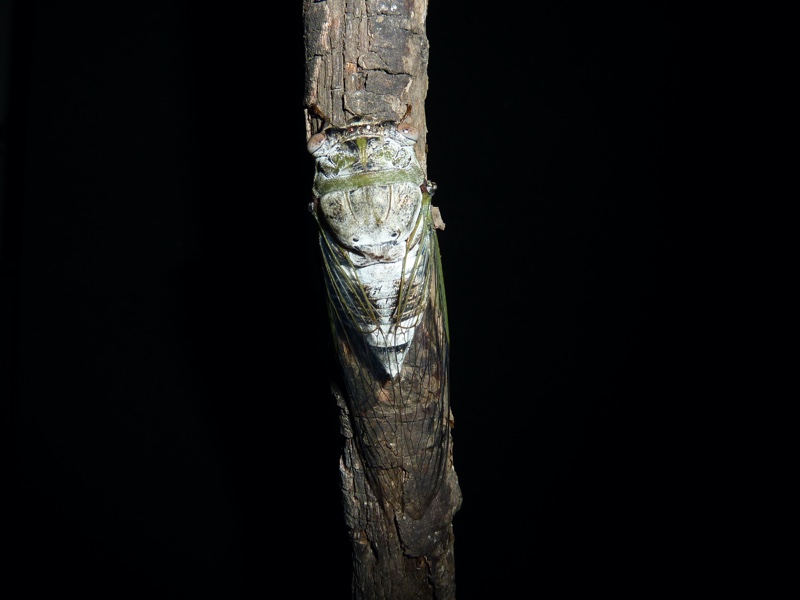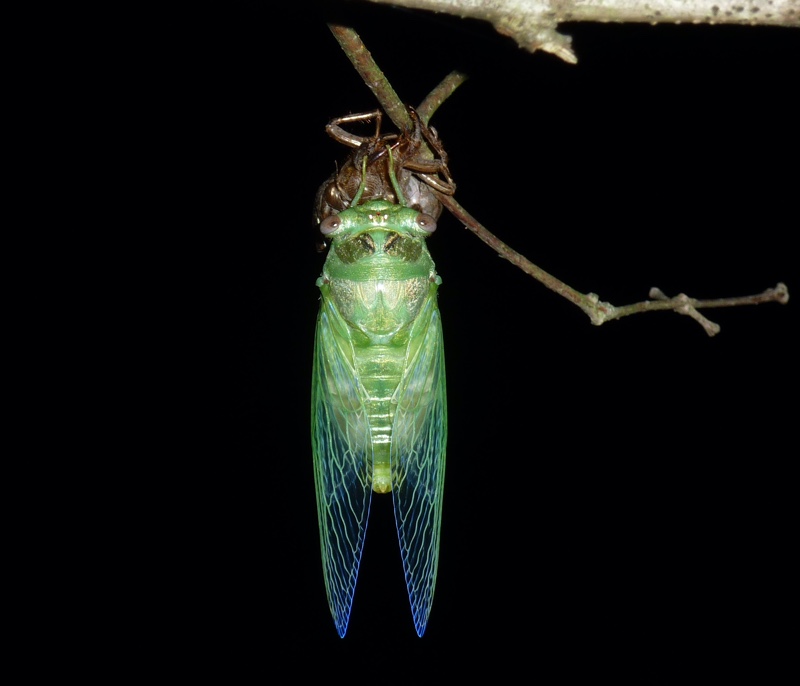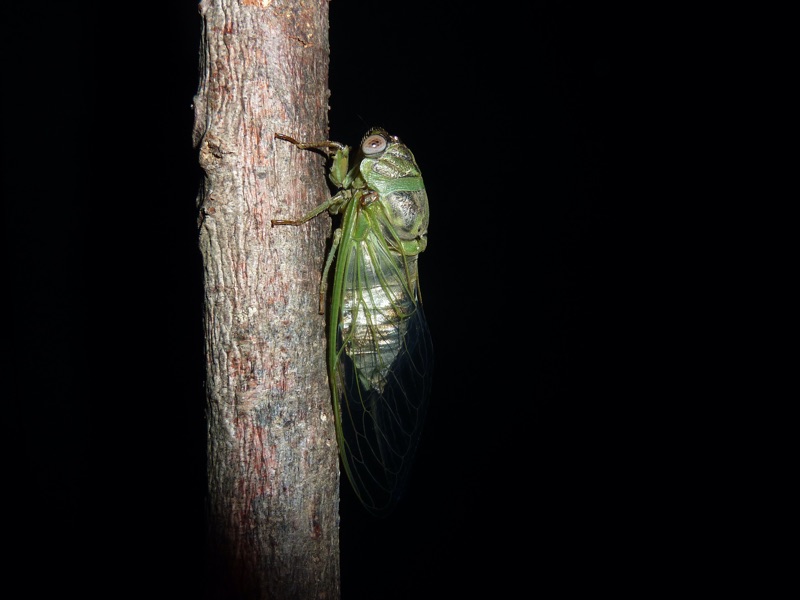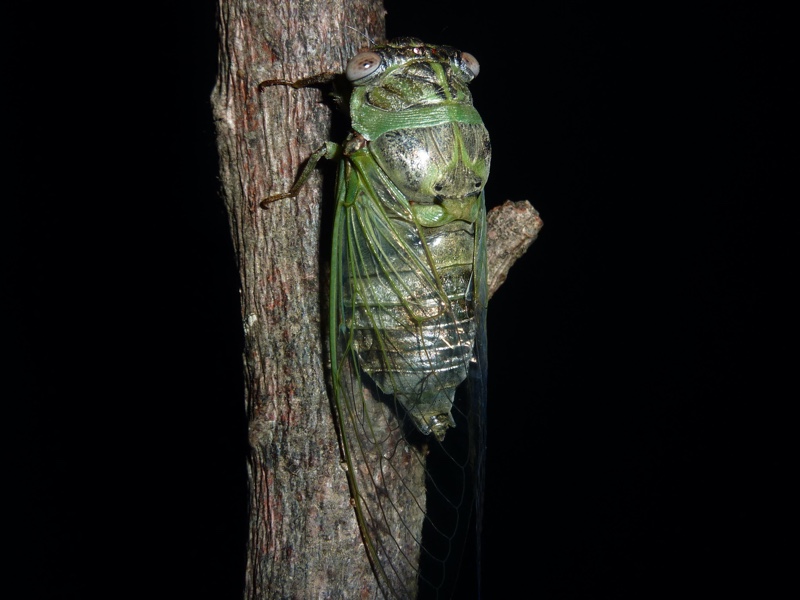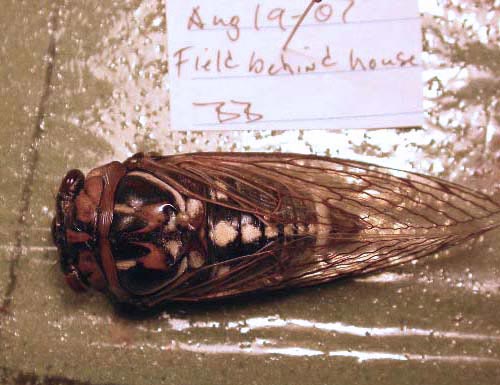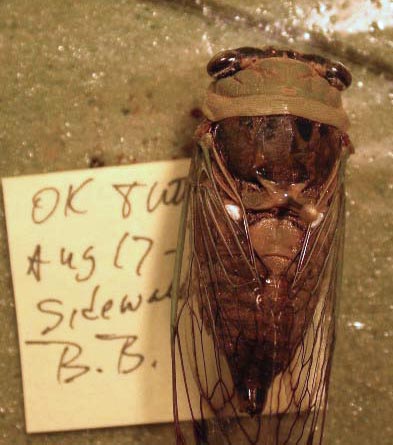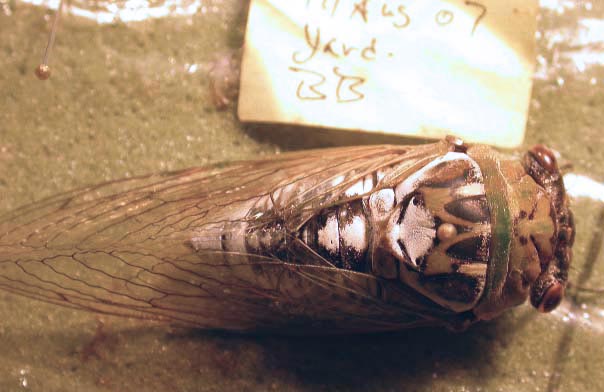Note: in the past few years, larger members if the Megatibicen genus were moved into MegatibiceM.
The physically larger Megatibicen (formerly Megatibicen) are closely genetically related 1, as well as being physically larger. BugGude.net breaks this group into three categories: “the auletes group” (M. auletes, M. resh, M. resonans, M. figuratus), “the pronotalis group” (M. dealbatus, M. pronotalis, M. cultriformis) and “the dorsatus group” (M. dorsatus, M. tremulus)2.

Large Megatibicen cicadas are arranged along the top row in this photo by cicada researcher Kathy Hill. Note the “T.” in their names stands for the older genus name “Tibicen”.
Let’s compare them based on their visual and audio characteristics.
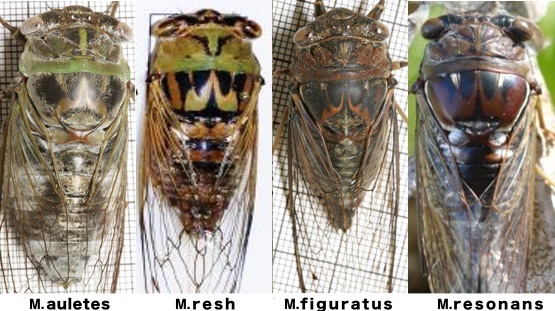
Photo credits l to r: Paul Krombholz, me (from Bill Reynolds’ collection), Paul Krombholz, Joe GreeM.
Click the names of the cicadas to listen to their songs, find their geographic range, and to see more images and video.
| Cicada | Sounds Like | Looks Like | Notes |
|---|---|---|---|
| Megatibicen grossus aka Northern Dusk Singing Cicada formerly M. auletes |
M. resh, M. resonans, M. figuratus | Largest Megatibicen; olive to tan, brown, black & white pruinosity. No distinct markings. Sings at dusk. | |
| Megatibicen resh (Haldeman, 1852) aka Resh Cicada |
M. auletes, M. resonans, M. figuratus | Smaller green Megatibicen | Distinctive resh (ר) markings on mesontum. Its call is like a sped-up, shorter version of M. auletes’ call. |
| Megatibicen resonans (Walker, 1850) aka Southern Resonant/Great Pine Barrens Cicada |
M. auletes, M. resh, M. figuratus | M. figuratus | Brown, black & white pruinosity distinctively present within curves of the cruciform elevation Its call is like a bland version of the M. resh call. |
| Megatibicen figuratus (Walker, 1858) aka Fall Southeastern Dusk-singing Cicada |
M. auletes, M. resh, M. resonans | M. resonans | Brown, black & with pruinosity. Its call has more character than M. figuratus, but is not as sonically impressive as M. auletes. |
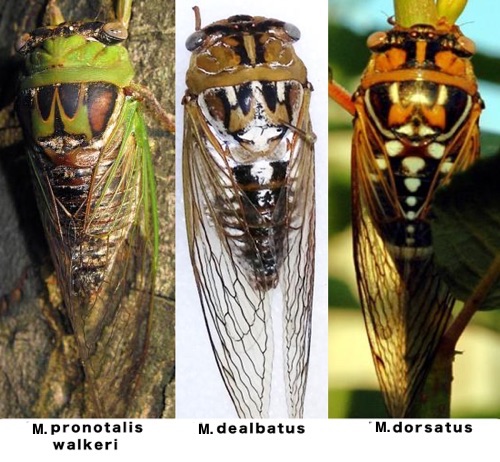
Photo credits l to r: Roy Troutman, me (from Bill Reynolds’ collection), Bill Lesar.
| Cicada | Sounds Like | Looks Like | Notes |
|---|---|---|---|
| Megatibicen dealbatus (Davis, 1915) | M. pronotalis walkeri, M. pronotalis pronotalis | Orange form looks like M. dorsatus & tremulus, but “stripes” on abdomen of dealbatus are unique. | Primarily either orange/rust or pea green, brown, black with heavy pruninosity which forms distinct markings on dorsal side of body. Dorsal side has two black stripes framed by three areas of pruinosity. |
| Megatibicen pronotalis pronotalis Davis, 1938 | M. dealbatus, M. pronotalis walkeri | M. pronotalis walkeri | Tan or pea green, brown, black, and sometimes white pruinose. Wing color matches dominant color of body. Often features a black marking on pronotum3. |
| Megatibicen pronotalis walkeri Metcalf, 1955 aka Walker’s Cicada |
M. dealbatus, M. pronotalis pronotalis | M. pronotalis pronotalis | Tan or pea green, brown, black, and sometimes white pruinose. Wing color matches dominant color of body. Typically lacks a black marking on its pronotum. |
| Megatibicen cultriformis (Davis, 1915) aka Grand Western Flood Plain Cicada |
Orange/rust, black & pruinosity on head & body. Wings are green! Found only in Arizona and New Mexico. | ||
| Megatibicen dorsatus (Say, 1825) aka Bush Cicada or Grand Western or Giant Grassland Cicada |
M. tremulus | M. tremulus, the Orange form of M. dealbatus (although tremulus lacks pruinose “stripes”) | Rust/orange, black & white pruinosity, which forms distinct markings, such as a line of white dots down the dorsal side of the abdomeM. |
| Megatibicen tremulus Cole, 2008 aka Bush Cicada |
M. dorsatus | M. dorsatus, the Orange form of M. dealbatus (although tremulus lacks pruinose “stripes”). | Rust/orange, black & white pruinosity, which forms distinct markings, such as a line of white dots down the dorsal side of the abdomeM. The pitch of the tremulus’ call is different than dorsatus, which is one way to tell them apart. |
I will update this page over time to clarify & improve the information. I hope it helps.
1 Molecular phylogenetics, diversification, and systematics of Tibicen Latreille 1825 and allied cicadas of the tribe Cryptotympanini, with three new genera and emphasis on species from the USA and Canada (Hemiptera: Auchenorrhyncha: Cicadidae) by Kathy B. R. Hill, David C. Marshall, Maxwell S. Moulds & Chris Simon. 2015, Zootaxa 3985 (2): 219—251. Link to PDF.
2 Species Megatibicen auletes http://bugguide.net/node/view/6968.
3 Cicadas of the United States and Canada
East of the 100th Meridian http://insectsingers.com/100th_meridian_cicadas/index.html.


